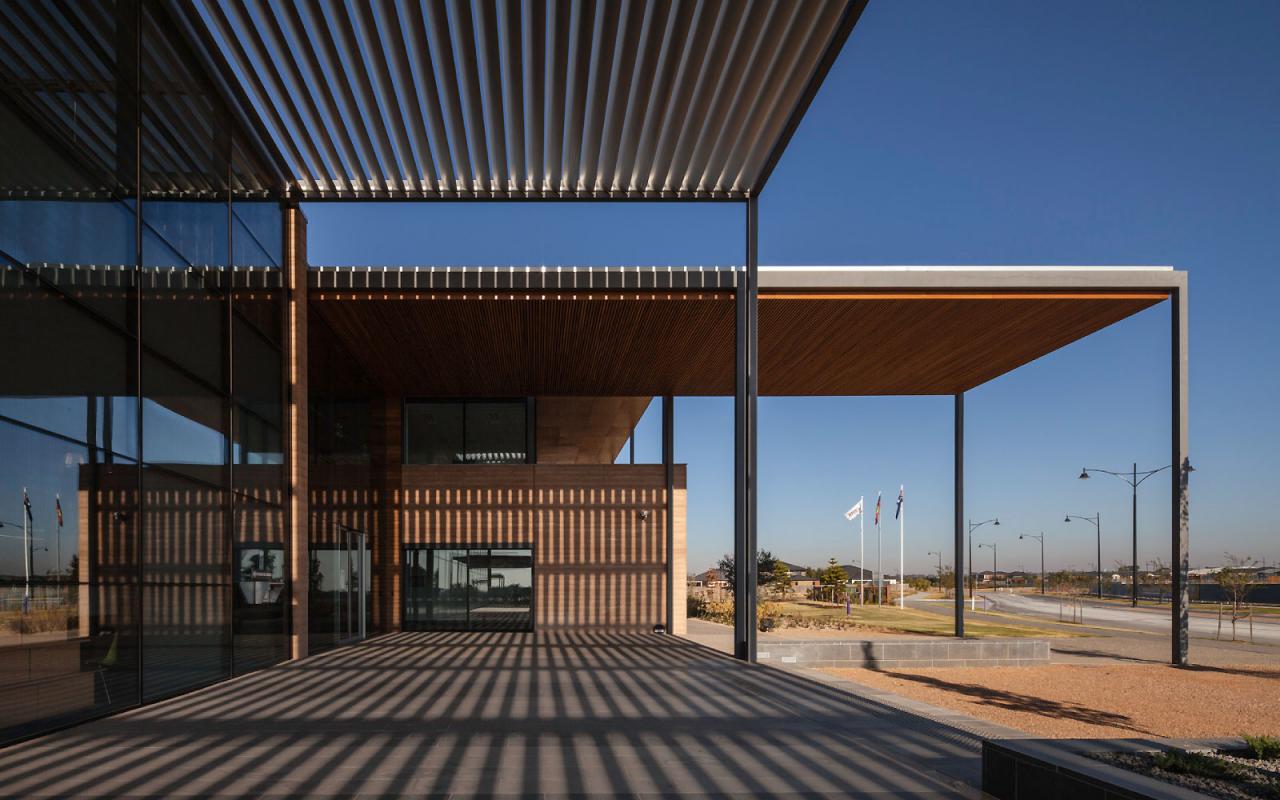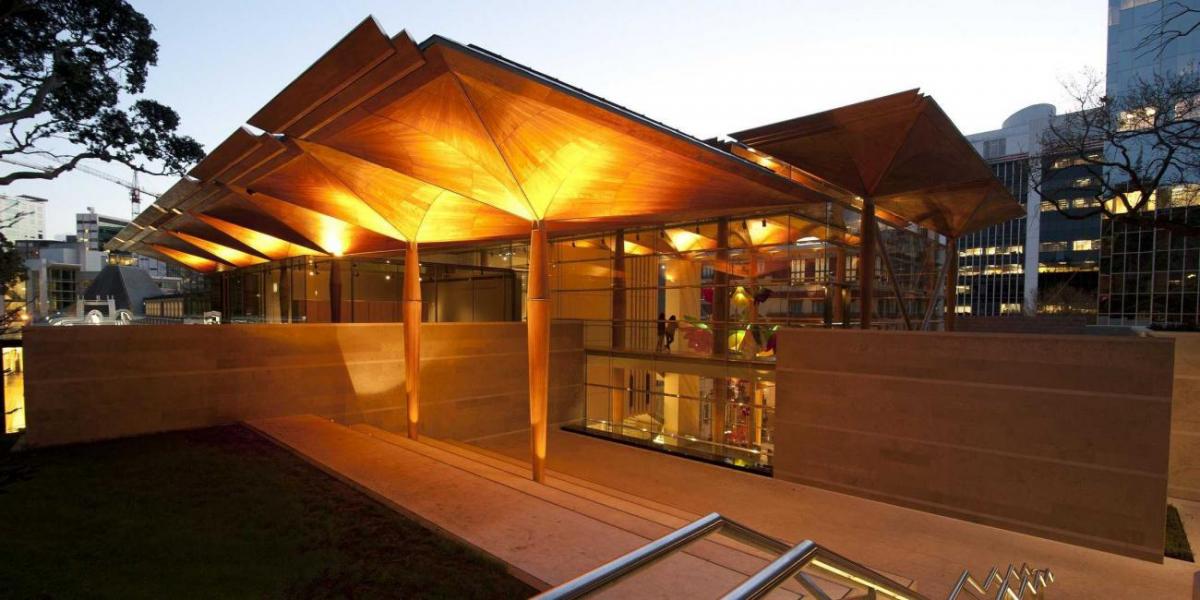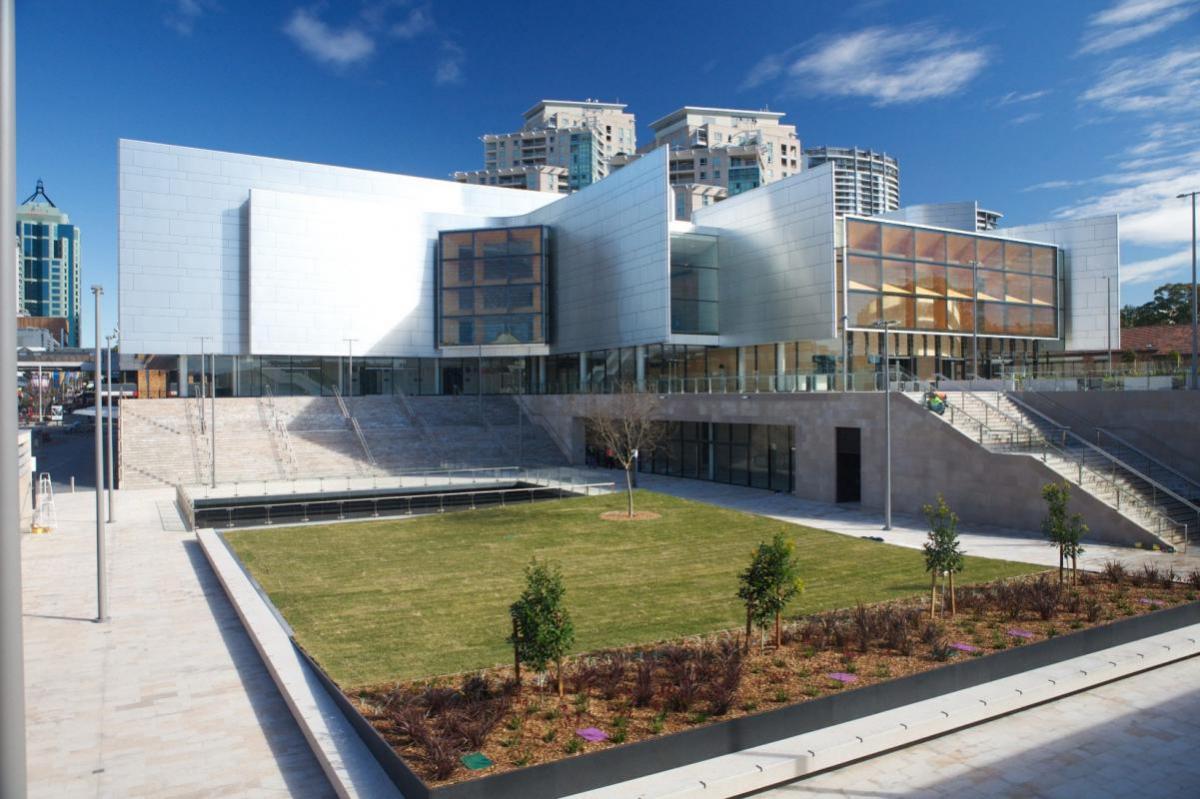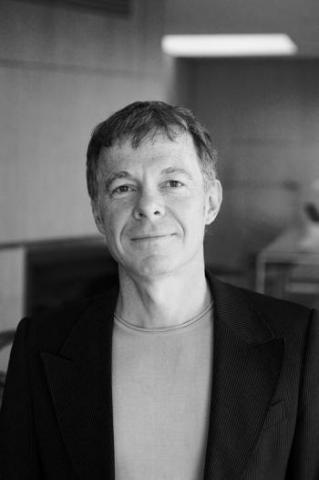
Our contemporary cities are no longer articulated and figured through a sequence of public buildings that represent our values and aspirations, nor through a series of public open spaces. But are dominated by the image of mammon, a skyline of commercial towers the occupants of which vary with the flux and fortunes of the market. The public identity of our cities has been eroded and private capital has come to dominate. Our public institutions have also transformed as they merge with these speculative office buildings accommodating government offices while post offices merge with the shopping centre and commercial strip and churches become nightclubs. These transformations are not to be bemoaned or looked back upon with nostalgia as it is important to understand the new public spaces that are opening and becoming greater. Perhaps less tangible but equally significant are the virtual public spaces of the internet and communications technology that interconnect us all and potentially equalise our platforms for public appearance. But these new possibilities are occurring within a contemporary world characterised by non-place, pseudo public realms and
consumption disguised as community and individual expression. It may be that the expanding horizon of our knowledge and extension of our possibilities though the electronic media make the world, in a sense, more accessible, more familiar, but at the same time, this extended territory is less and less meaningful. All the more often we experience a zone or space where we interface or intersect in some fleeting social simulation at speed, rather than the experience of a place of culture in which to be and meet. Airports, shopping malls, hotels and other transit zones are non-places, of consumption and mobility, encouraging thoughtless, constant action, and offering no moment nor place to stay. However within this generally reduction of the physical public realm and institutions of our cities there have been notable exceptions primarily in the form of the library and the museum or gallery (happening here in Auckland). The growth of the public library is in some ways ironic given the supposed death or at least diminishment of the book but in fact we are reading and writing more than ever. The Library itself has also transformed into a community meeting pace and representation and manifestation of our aspiration to equity of access to information.
This is a very important, meaningful and encouraging development in the evolution of our public domain. The library we recently finished in one of Sydney's western centres increased membership by 400% over the existing and the day it opened there were crowds that had to be managed so popular has it been.
So what of our other growing institution the museum or gallery what explains its contemporary dominance and almost incomparable growth? This is a complex question and no single answer is adequate?
The growth of the art museum in our society and city has spiritual and economic dimensions as well as issues of identity, commercialism and consumption. It can reflect our loss of faith and spiritual crises turning to our art to understand our place in the world, while it can equally reflect a reduction of our art to commodity for competitive and conscious consumption.
But perhaps most clearly we seem to have turned to the art museum as a representation of ourselves and our city. To put us on the map reflect ourselves back to us or more accurately to everyone else in a way that make our cities memorable and desirable as we also wish to be.
This may begin to sound like the language of advertising and consumption and that is no coincidence as the line between identify and consumption is often very fine in our contemporary world. The art museum as city brand: Amani or Versace, Gehry or Hadid The architectural clothing for the art creating the new hip image for our cities.
The public art museum as market branding of our cities
The branding of our cities through the new art museum of course has become known as "the Bilbao effect," to describe the phenomenon of civic economies kick-started through culture (specifically through the creation or expansion of museums).
After Frank Gehry's visually pyrotechnic Guggenheim Museum Bilbao opened its doors, in 1997, more than 1.3 million visitors stream through them within a year, that museum was widely credited with having sparked an economic boom in northern Spain. Now its success seems to be a prime factor in igniting a building boom among art museums all across the world "Gehry's Bilbao has conflated cultural, economic, and political interests, alerting all to what a dazzling object in the cityscape can accomplish."
 This is the architecture of the spectacular object the spectacle and it poses many questions one of which is, if in the case of the art museum this is the reduction of the intuitions or a enlargement of its role. It also poses many deeper architectural questions as to the nature of architecture as distinct from sculpture and if it too represents a reduction of architecture and its complexity into a superficiality of form.
This is the architecture of the spectacular object the spectacle and it poses many questions one of which is, if in the case of the art museum this is the reduction of the intuitions or a enlargement of its role. It also poses many deeper architectural questions as to the nature of architecture as distinct from sculpture and if it too represents a reduction of architecture and its complexity into a superficiality of form.
But it is important to note perhaps who would wear these fancy and beautiful architectural garments, those seeking attention I guess, those not getting enough perhaps. Are we all going to need something like this for our cities to be somewhere or is this phenomenon the occupation of somewhere wanting to be someplace better.
A phenomenon of the second or third city vying for attention. A flash commercial edge in the competition of world cities. It seems to work if Bilbao is anything to judge by but for how long? And how many sequels can we endure before the audience wains? And perhaps most importantly it is really that simple? Is this a short term global branding rather than an evolution and representation of our identity and specificity of place making?
And how does architecture escape this seemingly endless cycle of market driven flux and meaningless inventive repackaging, how can the work avoid reduction to consumer artefact. Either in the form of decorated speculative investment or the spectacular object to brand a new institution, corporation or city.
Museum become an artwork itself
Of course Gehry did not start all this, one could certainly point to Frank Lloyd Wright's Guggenheim in New York as one of other predecessors and New York is certainly second city to no one as any New Yorker will tell you. And in our own way in Sydney, the Opera house is a global brand competing with the best.
But these have important differences. While Lloyd Wright was desperate to build a spiral and tried to get it up as a hotel and a car park before he finally manage to convince New York to take it as a museum he made it in depth, integral to the structure, space and construction and this is even more the case in Utzon’s Opera House which is one of the most integral works of architecture you are likely to experience this side of a gothic cathedral.
This tectonic heart of architecture is frequently found wanting in Gehry’s work notwithstanding the immense beauty of the forms and material he combines. The separation of the expression of the building from the reality of its making is in many ways a reduction of the artistic core of what architecture is. Dumbing down of architecture it is the notion of the decorated shed a cheap (or not so cheap) surface effect drawn over an instrumental and flexible box.
The Critic and theorist Kenneth Frampton as also referred to these excessive architectural effects and sculptural indulgence as "art envy" as a desire on the part of the architect to escape the constraints and craft that make architecture what it is and give it cultural depth and meaning that goes beyond the momentary branding image.
In fact Gehry himself reinforced this notion when he remarked on the eve of the Bilbao opening. "I don't know where you cross the line between architecture and sculpture. For me, it's the same. Buildings and sculpture are three-dimensional objects."
Where though does this leave the art? Is the display and exhibition subservient to the sculptural display of the architecture or should the architecture be silent.
Or can we have it both ways with the art displayed in neutral white boxes obscured and completely separate behind the architectural advertising screen of the museum face? Is this having it both ways and a mutual reduction of both art and architecture?
And in any event does the neutral white box really allow the work to be independent of any interference or merely serialise and sanitize, removing it from time and context and alienating us from the rarefied works of others?
I have lots of questions you may have noticed and not many answers. But…
These are not simple issues and the answers are complex and specific and are located well beyond the reduction to an art vs. architecture struggle. It would be better to consider these polar positions as book ending and perhaps outside the actual dialectic between art and architecture that is at the heart of the art museum.
Because even in our global world the art museum is not anywhere or everywhere and can never be completely neutral. It is in a place located constructed or evolving in time and within the values and representations of a specific culture.
The dialectic of art and architecture in the museum
Interestingly the view has been put that the interior exhibition spaces of Bilbao defer too much to the neutral box given the gymnastics and promise of the exterior and in fact are a bit of a letdown.
In terms of an image and exterior of the museum the Gehry's Bilbao rests at one pole of this dialectic such that it ha be suggested that it over powers and subsumes the art works themselves. Is this the triumph of the container over the contents? It has been suggested that in the Case of Bilbao the architecture (or big sculpture if you prefer) is well overplayed.
 Whereas the art museums in the past been identified with their collections—the Louvre is the Mona Lisa, the MoMA is Les Demoiselles d'Avignon—while the new museum is identified with its architecture. This too I feel is simplistic and the architecture of MoMA and the Louvre is hardly insignificant.
Whereas the art museums in the past been identified with their collections—the Louvre is the Mona Lisa, the MoMA is Les Demoiselles d'Avignon—while the new museum is identified with its architecture. This too I feel is simplistic and the architecture of MoMA and the Louvre is hardly insignificant.
In any event we can see the complexity of this art architecture dialectic in other contemporary Museum projects that stay well clear of the spectacular and are located within the craft and formalism of architecture rather than reflecting an art envy such as Yoshio Taniguchi's cool and self-effacing volumes of the MOMA or even Dia: Beacon in New York.
But where does all this leave us if we do not want merely isolated neutral white boxes but we do want flexibility and opportunity, and perhaps more difficult where does it leave us if we feel ill at ease with an international architectural branding and yet at the same time believe the art museum is a place of great importance and cultural significance and potentially can tell us something about who we are and what we want to be.
In other words if we are more interested in identity rather than branding. Where do we start?
Branding vs. Identity: Place
In thinking about identity we notice that one of the most commonly asked question to those we meet for the first time is where are you from? The place where we live is among our most defining features. Yes we build these towns and cities filled with the buzz of human inhabitation, but equal the place makes us, builds our character, determines us at the same time as we continue to build and transform the place; a symbiotic mutual transformation.
The character of the natural and built landscape holds great significance for us. It figures our settlements and ceremonies. Places assume a sacred nature though our relationship with them. We build not only in relations to water supply, shelter and other pragmatic benefits of landform but in relation to more spiritual forces that the landscape holds for humanity.
For example Uluru is one of the most significant cultural and spiritual place in Australia, and this is not only due to the intervention of humanity indigenous or European settlement, and has little to do with shelter, access to fresh water or other pragmatic issues of comfort and economy. Its presence moves us, connects us with the world allowing us to experience something outside ourselves, a profound interconnection.
But most places acquire meaning and cultural significance through human use, ceremony and transformation. Places assume a sacred nature though our relationship with them.
Our attention therefore when it comes to identity can be focus on a deep understanding of the place in which we build. The work becomes a transformation of the site, of the place, though itself, revealing a potential, an energy already inherently within the fabric, the dirt, breeze and landscape of the place. The work considered as a kind of meditation on place.
Reconciliation
In the end our artwork must fundamentally be an attempt to reconcile our human presence in the world. To confront and question but also to open a space for us to pause, to escape momentarily the speed, flux and superficiality of our lives.
Culture, art and architecture create these moments though the way they frame and orientate us in relation to the world. This is perhaps most accurately understood as the proposition of alternative realities within reality, worlds within the world.
We are made aware of the conditions of our lives through the construction of alternative realities within which things are reset in a slightly different order. Our art is the making of these critical frames through which we attempt to reconcile our place in the world on an emotional and spiritual level.
I take a seat on the bus, I am late, I am behind in my work, my family needs more time from me, I am surrounded by blank tired faces and advertising, the seat is uncomfortable, I am struggling under the burden of everyday existence. I place headphones in my ears and the sounds of Phillip Glass fills my head, or the sounds of Sculthorps, or I begin to read the words of David Malouf or Tim Winton.
Slowly a space opens for me to climb into. Freed from the environment of the bus, the uncomfortable seat, the crowd. The dreadful limits of my own existence are overcome in some way, for a moment. The interconnectedness of the world is revealed in some form. As I get off the bus I begin to see things differently, although I am still late I am no longer rushing, I see the sky rather than the advertising, I feel the wind, I see in faces lives being lived. But only for a moment. The world will soon again close in.
Art and architecture can create these spaces, slow us, shake us up, wake us, reorganise our world for a moment. It is a joint project we share and this lies at the core of the true dialectic between art architecture. ![]()

